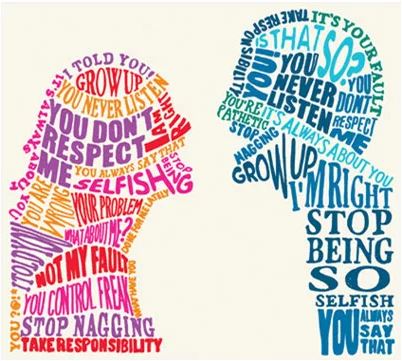
Conflict Resolution by Ginger Marks
“No, I’m not going to agree to that!”
“Well I’m not going to agree with what you want to do either!”
Does this type of conversation sound familiar? Have you been involved in a war of words or ways? Perhaps you have found yourself facing one or many of these types of conflicts: personal, emotional, work-related, political, racial, socio-economic, physical, or spiritual.
There are almost as many methods that can be used to resolve issues as there are types of situations which can cause conflict. Here are some steps which can help you resolve some of the conflicts you may be facing.
Step One: Once you have identified the type of conflict you are facing, try to impartially look at the issue, working to remove how it makes you feel. If you can manage to set aside anger or frustration, you will be in a better position to identify the possible root cause of the issues.
Step Two: Listen to the other person or the other side of the issue. Do not let your thoughts wander, and don’t start formulating your rebuttal before you have completely heard the case the other side is trying to make. If you listen carefully, you’ll be able to understand their perspective. This may allow you to see things far differently than you originally perceived.
Step Three: Don’t waste energy trying to assign blame or shift it to another person. Usually, it takes two to create a conflict. Focus on areas that will lead toward solutions.
Step Four: Remember, it is not all about you! It is about coming to a mutual agreement with another person. Sometimes you will be able to resolve the issues, forging a middle ground of compromise and understanding, while at other times, you will simply have to agree to disagree.
Step Five: Always admit if you are wrong, and importantly, be ready to forgive the other person if they are wrong. This will allow you both to continue developing and maintaining a relationship that is based upon mutual respect.
Step Six: Don’t dwell on the past! There is an old saying, “You cannot move forward if you are always looking backwards.” Move past the current conflict and learn from it.
To better put this into perspective, Ken Johnson, Restorative Justice Facilitator, Mediator with certifications from both the Supreme Court of Florida and the US Department of Agriculture, author of Unbroken Circles for Schools notes the following:
“It’s important to realize conflict is a dynamic force. We know there’s two types of conflict: anabolic (good conflict) and catabolic (bad conflict). Anabolic is overt. It seeks to better a situation. Obviously, catabolic conflict does the opposite. Unfortunately, resolving conflict is made more difficult because 1) we actually embrace catabolic conflict 2) it is in a constant cycle of change and growth.
Catabolic conflict starts off as simple confusion or tension, it progresses to becoming a dilemma or role crisis, from there people begin to feel unjustly treated, this leads typically to a confrontation, and then adjustments are made in the relationship dynamic. After several cycles, both parties can lose sight of the original cause of the conflict. Therefore, it is critical for both parties to divest themselves of emotion and seek to collaborate toward a mutually agreeable solution.”


